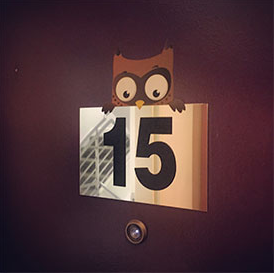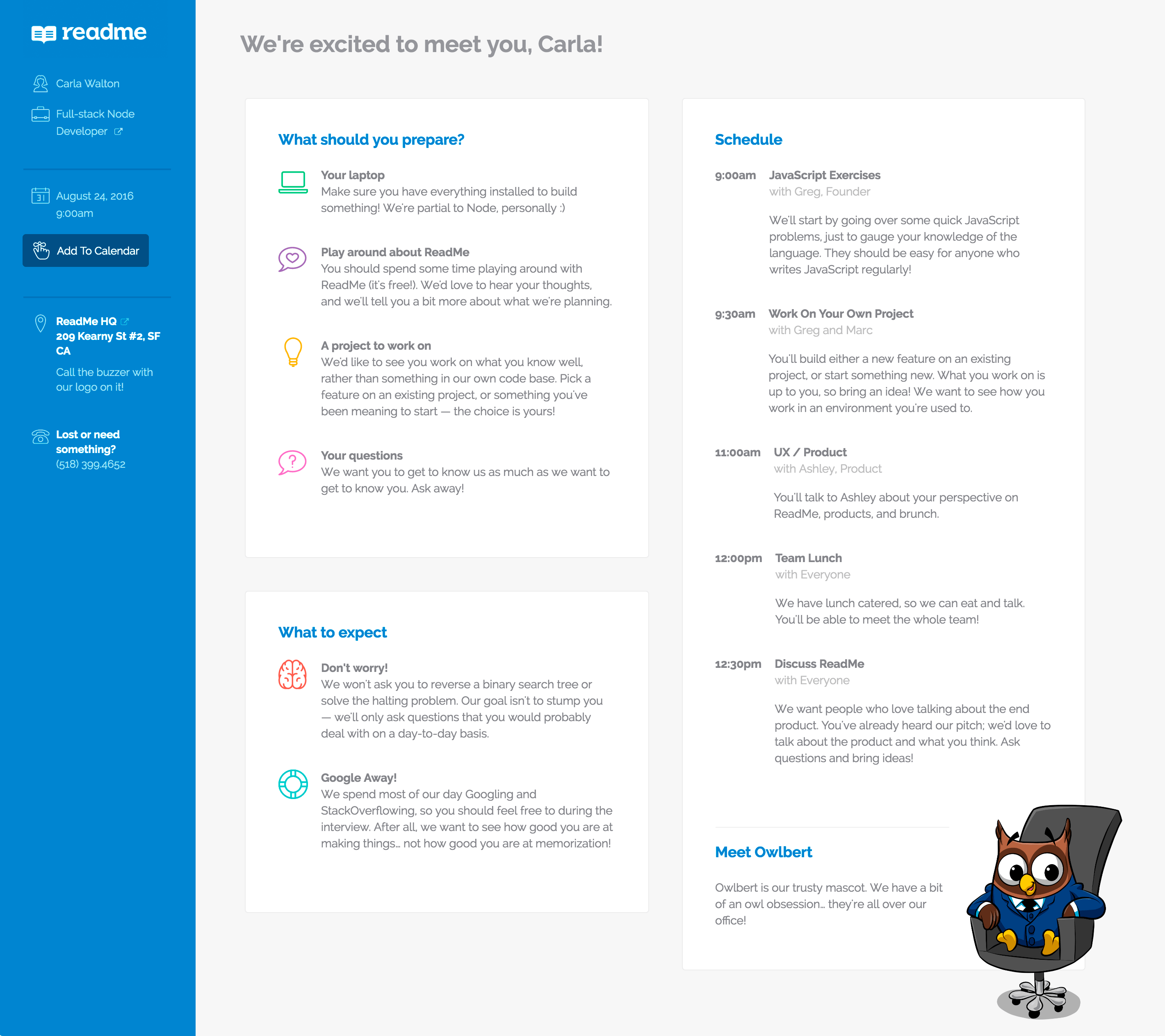Hiring is a broken system in the startup world.
Whether it's hiring a product manager, a sales rep, or an engineer, employers often neglect to think about the experience from the interviewee's perspective. They're so worried about finding the most impressive candidate that they don't bother exposing them to the day-to-day work or telling them about the inner workings of the company. As a result, the candidates who interviewed well are asked to take the job with no clue about what they're getting into.
At ReadMe, our goal was to design a hiring process that's a two-way street. We're a small company so we don't just want qualified employees, we want employees that would also love the job and stick around. Here's the hiring process we've come up with to find the best fits for ReadMe.
Transparency from the Get-go
I've been through countless interviews, and I always felt like the interviewer was trying to trick me or show me up. I'd come in and be quizzed on definitions, asked to solve the halting problem, or be put to making a binary search tree. I'd come home either feeling like I blew it, or like I was going to get a job working for people who wanted me to fail.
We go into interviews with the mindset that we want the interviewee to succeed. We do this by setting clear expectations. We do this through documentation (go figure!)— interviewees know how to prepare, what we're looking for, and how they'll be evaluated. No tricks, no drills, and no bullshit.
As soon as we schedule the interview, applicants receive a link taking them to this welcome page.
Before the interviewee even steps foot in the office, this intro accomplishes the following:
- Sets expectations for the interview. They're not left wondering what curve-ball we're going to throw at them. Instead, they know how to prepare and what they're in for.
- Demonstrates our attitude. We injected some personality into this doc, so they can get a glimpse of our attitude. We want it to be easy for an interviewee to make up his or her mind about us. That's why we intro them to Owlbert and explain our reasoning behind the different parts of the interview.
- Provides access to support. We're a curious bunch ourselves, so we encourage questions! We give the interviewee access to a phone line in case something comes up before the big day.
First impressions are everything. This document lets us make a good impression on our interviewees, while giving them everything necessary to make a good impression on us.
A Day in the Life
We recognize that the applicant is making up their mind about us, as much as we are about them. So when it comes to the actual interview, we try to give them an accurate idea of what it's like to work with us.

After intros, the day starts with some quick programming problems—the sort they'd be solving in-house. This is our way of gauging their experience level without throwing unnecessary and irrelevant trick questions at them. It's a bit of a warm-up.
After that is the main part of the technical interview: we ask interviewees to work on their own project, using whatever resources they deem necessary (and yes, that includes Google). We want resourceful developers who can problem solve, not people with an encyclopedic memory. We use this as an opportunity to learn what our candidates are passionate about. This helps us understand whether ReadMe is a place where they can pursue their long-term goals.
Since we want the interviewee to succeed, it makes sense for them to work in an environment they're comfortable with (rather than one we are). At a job, you're familiar with the code you're working on, so we wanted to mimic that in the interview as best we could.
Lastly, we have lunch with our candidates so they can get to know us on a personal level. We're a small team, so we want to make sure everyone gets along well and can work together for long spans of time. Especially since Owlbert gets a little cranky without his beauty sleep (he's nocturnal, you know).
Who We Say Yes To
We care more about what people can do than what they have done. Sometimes people with the best resumes aren't necessarily the best fit for ReadMe.
During these early stages, our company structure is egalitarian. Everyone works together to make the big decisions, so it's critical for everyone to have the same values in mind. Every new hire is going to have a huge impact on culture, so we want to stay true to the core identity we're already so proud of.
We also want to make it clear what people are getting themselves into. That's why every offer letter comes with an employee handbook. It gives potential employees an inside look into what we're all about.

This handbook includes everything from why we founded ReadMe, to benefits, to values, to where and how we have fun. We want the interviewer to know everything they can in order to make an informed decision on whether they want to join our growing family.
What We've Learned
We knew that we wanted documentation for our hiring process, but we didn't know how much ReadMe would benefit from this small packet. Setting things in stone forced us to prioritize what we care about most and decide on our values. Although we could all sense what our culture was developing into, we were able to find a vocabulary for it, which now pervades daily life here at ReadMe.
Most importantly, these docs enable us to open up ReadMe to more people. We're thrilled to finally get to share our traditions, our goals, and our owl puns with more wonderful and talented people.
(If you like this process, we're hiring! We might just be what you're looking for.)

